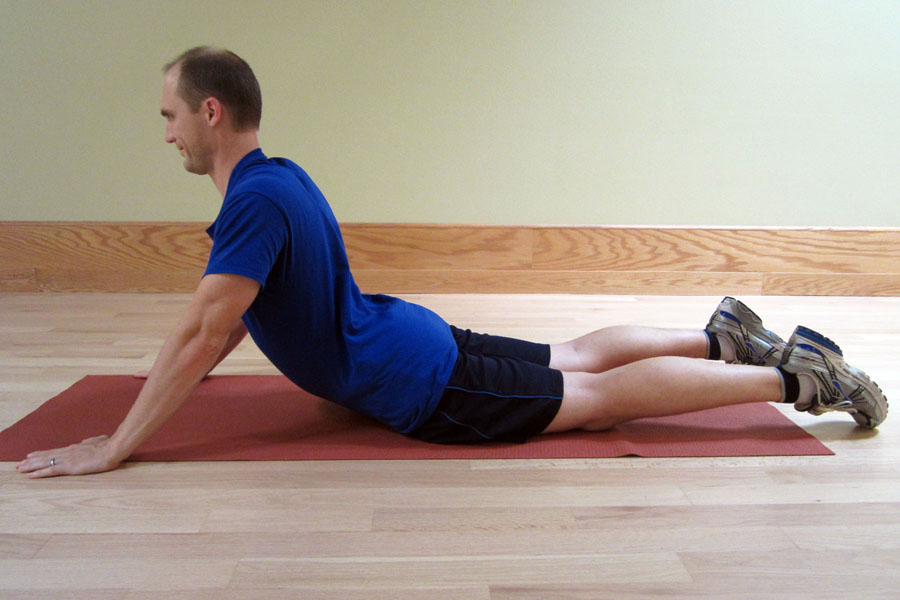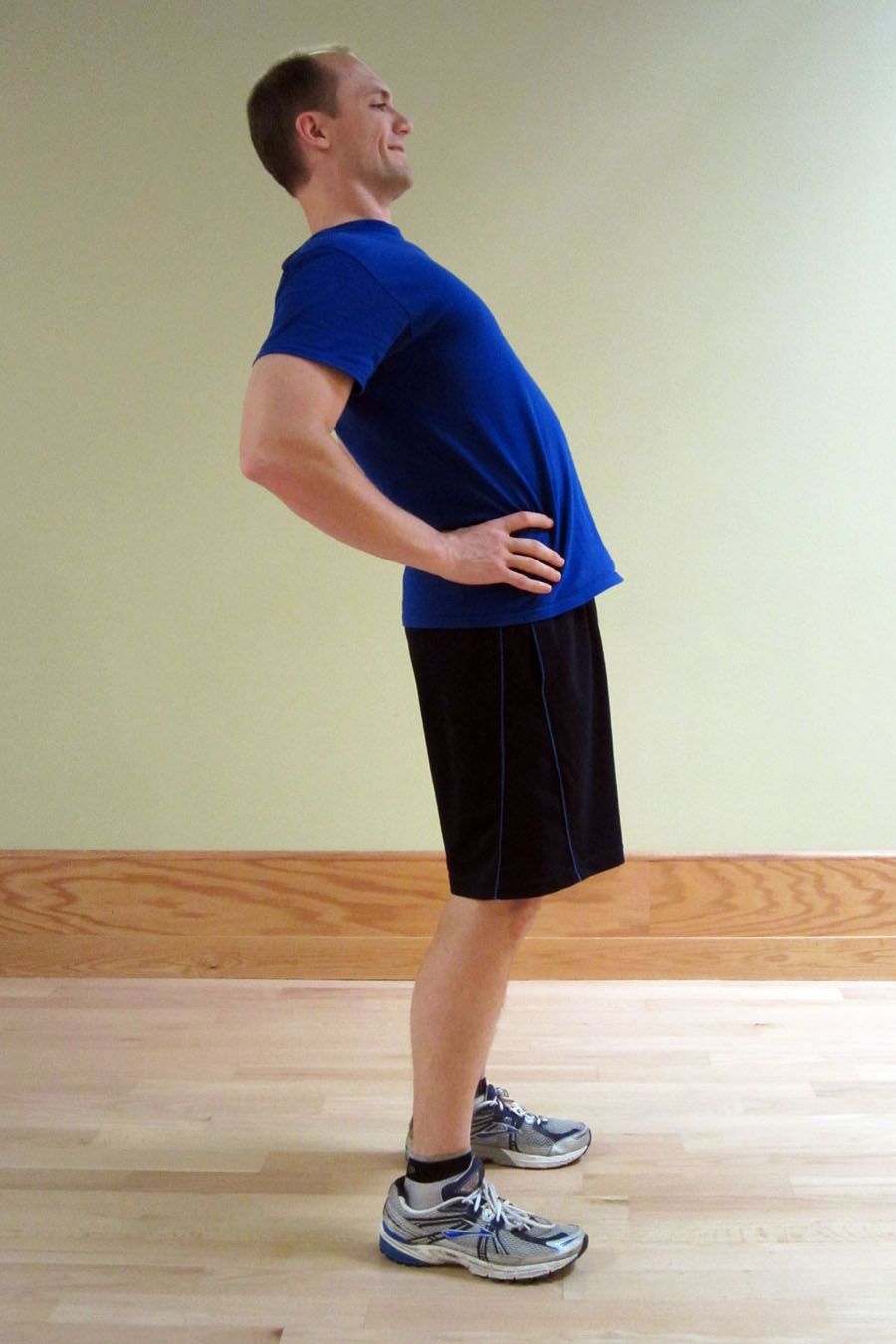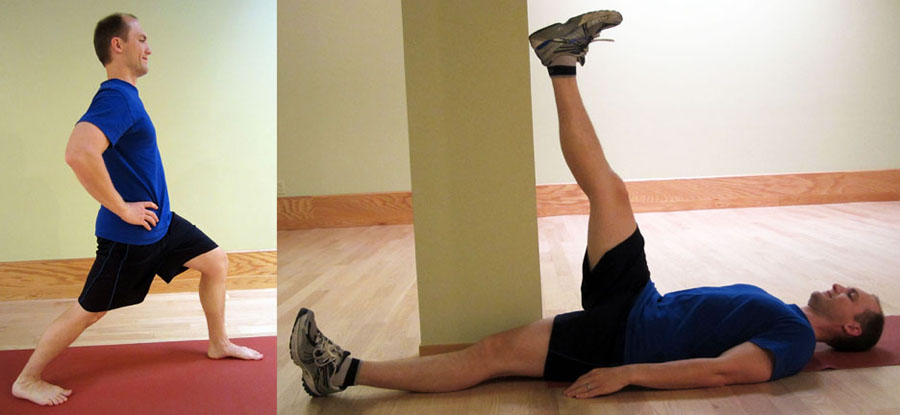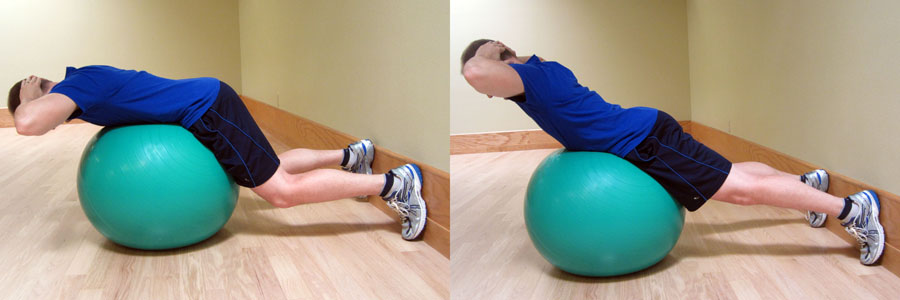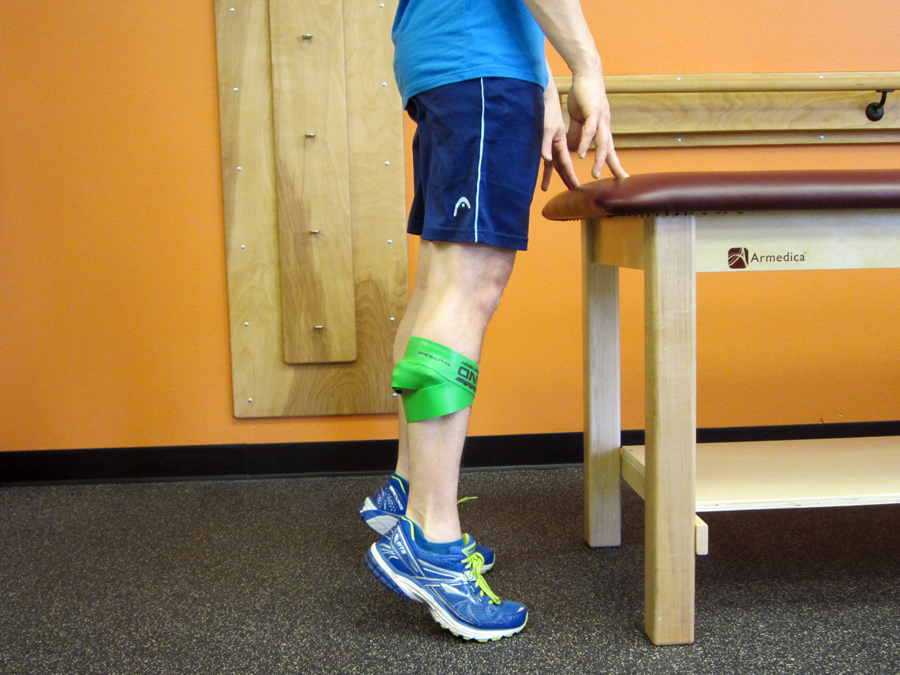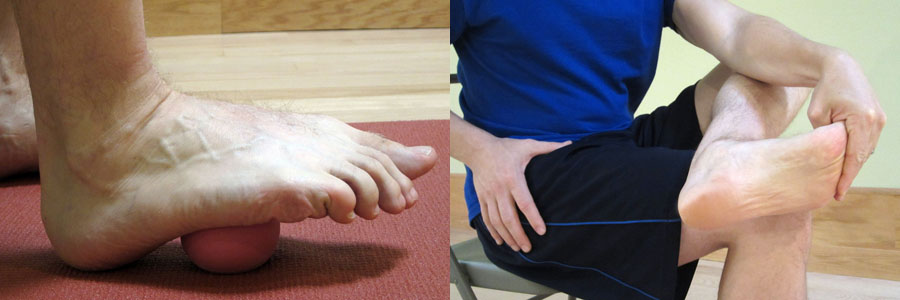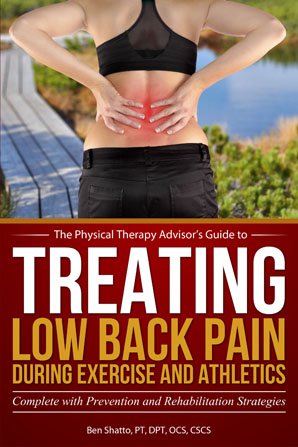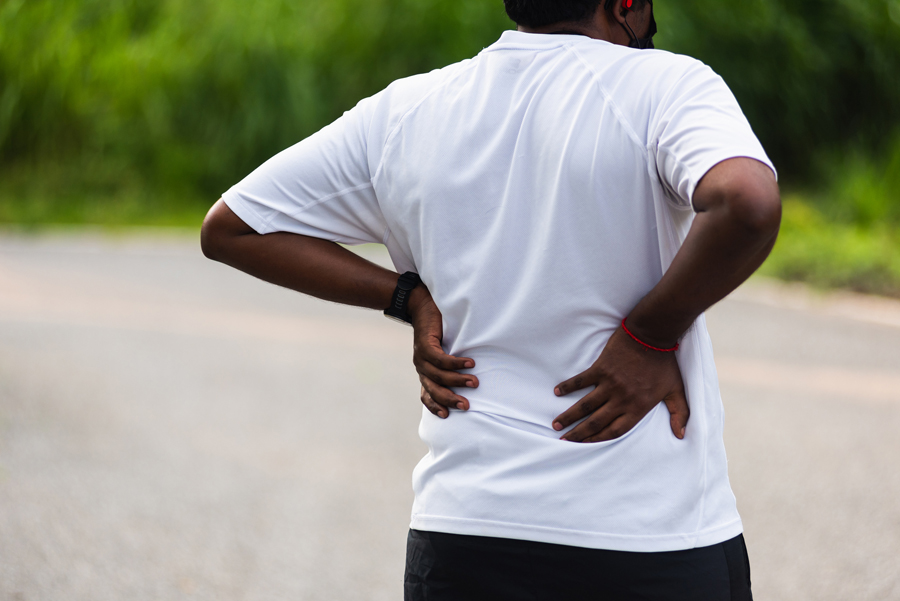Did you know that low back pain (LBP) affects nearly 80% of the US population at one time or another? It is one of the most prevalent medical conditions in the United States and one of the most common reasons why people miss work. However, in MOST cases, LBP is not a sign of a serious life-threatening condition. Only approximately 3% of serious pathology cases report low back pain as a symptom.
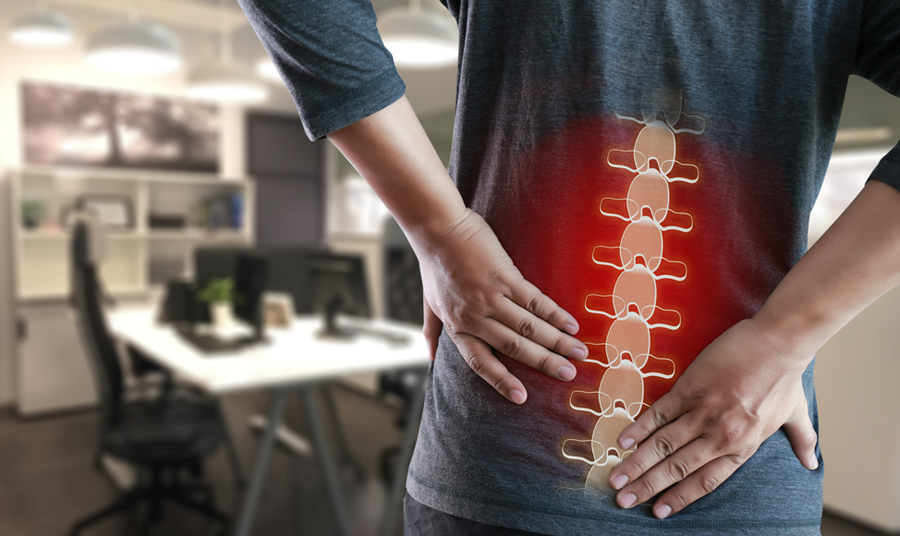
While most LBP is not serious, it can be very painful and have a significant impact on your mobility and quality of life. The good news is that you can follow simple guidelines to navigate an episode of LBP.
To safely self-treat your low back pain, first take a moment to assess your symptoms and pain level. What led to your pain and/or injury? Did the pain come on suddenly or slowly? Evaluate the severity of the injury. If you’re experiencing any of the following, please seek immediate medical attention:
- Loss of bowel/bladder function.
- Uncontrollable pain. The pain is so severe you cannot function or move.
- You are losing muscle function or control. The muscles in the legs will no longer work. (This is different than pain preventing the muscle from working.) This sensation of paralysis occurs when the muscles will not actually function.
- Significant loss of sensation in the leg or groin area. This is not a tingling sensation, but an actual loss of sensation. For example, you cannot feel the toilet paper when you wipe after using the toilet.
- Onset of pain without any known mechanism for the injury. (Thoroughly consider your activity. Many times, a slow onset of pain begins several hours after performing an activity.)
Simple Guidelines for Treating Low Back Pain:
Opt for conservative care
Most episodes of LBP improve quickly with conservative care. Research has effectively shown that early intervention with physical therapy is more cost effective, improves long-term outcomes, and decreases downstream health care dollars spent in unnecessary imaging and treatments. Unfortunately, the longer persistent LBP is ignored, the more fearful a person can become. This fear leads to decreased mobility which only makes the episode worse.
Surprising to many, but imaging does not correlate well to the causes of LBP. Worse, it often induces fear. The use of imaging is to rule things out. Negative imaging is good news! If your symptoms don’t match what is found on imaging, then more than likely that is not the cause of the pain you are feeling.
Keep moving
Exercise and movement in all directions is safe and healthy for the spine, even when it hurts! If you have LBP, move. If it is painful, modify and try moving again.
When your back hurts, aim for neutral posture to minimize any strain. Spine posture during sitting, standing, and lifting does not predict LBP or its persistence very well. However, improper posture in sitting, standing, and lifting can increase shearing, torsion, and loading on structures. Avoid putting an excessive load on irritated tissues which can certainly exacerbate an already sore back.
Fortunately, most LBP is mechanical–meaning it is from a physical or structural cause and isn’t related to conditions such as cancer or infections. Most LBP will have a directional preference for extension. A majority of injuries occur when performing a forward biased (flexed movement) like chronic slouching or a spinal flexion biased movement. For discussion purposes, I will be addressing an extension biased program.
With mechanically driven low back pain, you should be able to alter and change your LBP within a short period of time. First, establish a directional preference by identifying a pattern to the pain. Does the pain get worse when you bend over or does it improve? What happens when you repeat this movement?
Determine how your pain responds. If it spreads away from the spine and down into the leg, beware that you are moving in the wrong direction. Stop that particular movement, and instead try flexion biased movements. In my experience, most episodes of LBP tend to respond better to extension biased movements. If flexion or extension doesn’t help or change the pain in any way, then you may need assistance from a medical provider.
The rule of thumb for movement: If the pain worsens by spreading peripherally down the buttock and into the leg and/or foot, then the condition is worsening. We must stop that activity. If the pain centralizes and returns back toward the spine (even if the pain worsens slightly), then keep moving as the condition is actually improving.
Strengthen your core muscles
Your core is likely not what you think it is. Weak abs do not cause LBP. However, poorly coordinated pelvic musculature can precipitate and perpetuate LBP. Stop performing sit ups and start learning how to truly activate and strengthen the muscles of the inner core. Watch now as I describe what really the “core” is and why it matters. CLICK HERE
Constant low back pain can result from chemical inflammation to sensitized or damaged tissues. Intermittent pain is more often mechanical. Understand that medications are useful for helping reduce chemical inflammation, but addressing mechanical factors as well will lead to a quicker (and long term) recovery in most cases.
Unfortunately, low back pain will re-occur almost 90% of the time. To ensure a complete recovery from an episode and to help prevent re-occurring episodes, address other contributing areas such as the upper back (thorax) and your hip mobility. Typically, there is weakness in the deep stabilizing muscles known as the multifidus muscles. In the presence of LBP, these muscles will reflexively shrink, weaken, and lose function. Without proper rehabilitation, the muscles will not fully recover. This increases the risk of future episodes because the spine no longer has the ability to stabilize itself normally. Not all “core” work is created equally, so the strength of these muscles should be addressed.
Be as active as you can
Don’t stop moving, but avoid exercises that make your back hurt more. Typically, this includes flexion biased movements like sit ups. It’s important that you remain as active as you can. You may need to taper down certain activities that you know will increase your pain. This typically would be activities involving heavy loading of the spine such as squats with weight, deadlifts, and other activities that may cause forward flexion (particularly, under a load).
As you are able, continue to work on cardiovascular conditioning and core muscle activation (particularly, the lumbar extension exercises). Lift weights if you are able. Refer to the rule of thumb for movement (the concept of peripheralization and centralization). If your pain progresses from the area of the injury into your leg, then you need to stop that activity. If the pain remains constant or is progressing out of the leg, then continue with the activity as you are helping the body to heal.
Developing adequate strength in the lumbar extensor muscles and core musculature is the primary way to prevent initial episodes and to prevent re-occurring episodes of LBP. Research clearly indicates that the right targeted exercises are the most effective way to manage LBP.
If you’re not sure how to effectively and safely exercise your back or if you’re already experiencing low back pain, be sure to check out my Treating Low Back Pain (LBP) during Exercise and Athletics Book and Video Package. USE DISCOUNT CODE LBP AT CHECKOUT FOR 15% OFF!
For the approximate price of just one co-pay to see a doctor, you will receive my easy to read book with step-by-step instructions and a complete video package designed to help you prevent and self-treat re-occurring low back pain episodes.
If you have a question that you would like featured in an upcoming video or blog post, please comment below or submit your question to contact@thePhysicalTherapyAdvisor.com. In case you haven’t already, be sure to subscribe to my e-mail list and YouTube channel as well as join our community on Facebook by liking The Physical Therapy Advisor!


